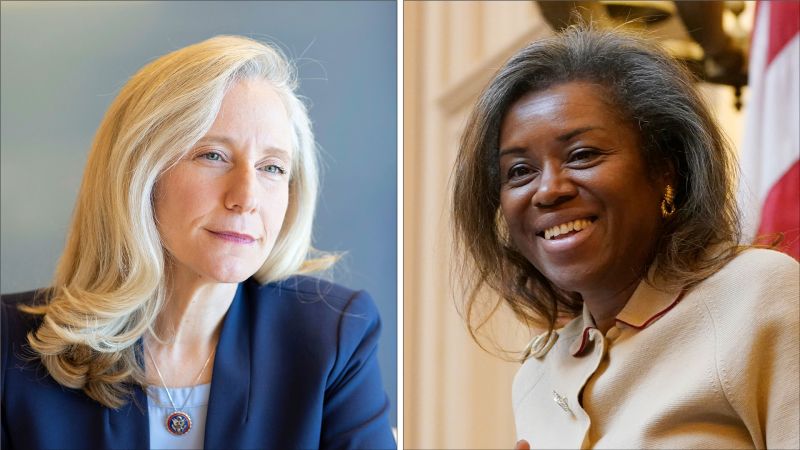The gubernatorial race in Virginia this fall marks a significant moment in the state’s history, as either Democratic candidate Abigail Spanberger or Republican candidate Winsome Earle-Sears will become Virginia’s first elected female governor. This pivotal moment underscores the increasing representation of women in politics, yet it also highlights challenges related to gender perceptions within electoral politics.
Despite the historic opportunity, both candidates appear more interested in addressing pressing issues such as federal job cuts and the state’s affordability than in the gender aspect of their candidacies. Spanberger and Earle-Sears, who are unchallenged in their primaries, are navigating the political landscape with a focus on constituents’ concerns rather than their historic potential. Their campaigns are committed to implementing solutions to economic issues that directly affect Virginians, reflecting a strategic choice to prioritize policy over identity during this electoral season.
Mary Sue Terry, a past Democratic gubernatorial candidate, noted the persistent stereotypes that female candidates face, pointing out that women are often perceived as diligent but not necessarily as strong leaders in comparison to their male counterparts. This stereotype translates into the political arena, where there is an implicit belief that women may not be suited for the demanding role of governor despite their capabilities. This race not only serves as a turning point for Virginia but also as a potential blueprint for women seeking higher office across the country, especially following the challenges faced by Democratic women in prior presidential elections.
On an unseasonably hot afternoon in Norfolk, Spanberger emphasized her commitment to addressing rising costs, flanked by local officials and a homeowner who had benefited from solar panel installation through a utility program. Gwendolyn Bailey, a homeowner present at the event, expressed that Spanberger possesses a viable plan to reduce surging utility costs—an issue of immediate concern for many Virginians.
Interestingly, while Bailey appreciated the significance of two women campaigning for governorship, her primary concern remained the accessibility of efficiency programs for her neighbors. This sentiment reflects a grounded view where community impact far outweighs historical moments in women’s representation.
In interviews, both candidates have acknowledged the gender aspect of their race but also emphasized their intention to focus on governance and issue-based campaigns. Spanberger humorously remarked about the excitement voters express at the prospect of electing California’s first female governor. Earle-Sears, on the other hand, indicated that voters are more interested in her policies and their implications for family welfare than in her gender or ethnicity, advocating a pragmatic approach to campaigning.
Earle-Sears became history’s first female lieutenant governor in Virginia and approaches the governor’s race armed with a strong record from her tenure, emphasizing her alignment with current Governor Glenn Youngkin’s pro-business stance. Her campaign underscores economic issues, such as the cost of living, pledging to eliminate the auto sales tax as a part of her policy reforms, which resonates with voters’ concerns over economic strains.
The discussion of women in gubernatorial races often intersects with broader theories about gender roles in politics. According to Michele Swers, a Georgetown professor, female candidates typically face different expectations and challenges compared to their male counterparts. While women may find pathways to legislative roles more accessible due to collaborative expectations, they often encounter significant barriers when challenging for executive positions, indicating a continued struggle against deeply ingrained societal perceptions.
Despite the increasing presence of women in state governance, with only 12 female governors serving currently across the U.S., the road to achieving equal representation remains fraught with challenges. Gender is not a standalone motivator for voters, as highlighted by Kelly Dittmar from the Center for American Women in Politics. Most voters prioritize policies over representation, while their lived experiences, such as motherhood, influence their candidacies in nuanced ways.
As the election approaches, the interplay between gender dynamics and political strategies will likely shape the discourse around both Spanberger and Earle-Sears. The legacy of qualified women breaking barriers in leadership, as articulated by former Governor Douglas Wilder, underscores the relevance of experience and competency over identity. Ultimately, the candidates’ ability to connect with the electorate on substantive issues will be the deciding factor in this historic race for Virginia’s governorship.



